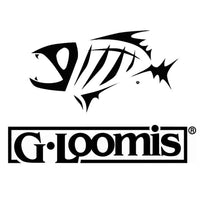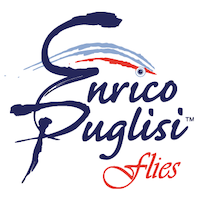Home
→
Tying the Diver Down
Tying the Diver Down

What's the Story?
Michael Fridfertig ties the Diver Down in a variety of colors for use in freshwater lakes in and around Orlando and for nearby inshore saltwater environments. The fly is designed around a Double Barrel Popper Head turned around backwards. With its trim profile, it is easy to cast with a light rod.
What's it Good For?
The Diver Down is very effective for any predator that eats baitfish at or near the top of the water column. Largemouth bass, baby tarpon, snook and speckled trout are a few of the species it will catch.
How to Fish It:
With the foam diver head, the fly will stay near or at the surface. This keeps it above underwater snags and in the strike zone for surface feeding predators. A slow, steady retrieve will create a small v-wake, imitating a baitfish swimming right below the surface. Use a quick strip to imitate baitfish trying to escape from a predator. If you want to get down a little deeper, the fly has great action when fished on a sink tip line.
Tying Options
This fly is easy to customize to match your preferred colors or the local forage. A synthetic material, like craft fur, can be substituted for the hackle tail. The dubbing, wrapped into place with a dubbing loop, can be replaced with a pre-made dubbing loop from Enrico Puglisi or another manufacturer or with a synthetic "hackle" like Palmer Chenille. The Solarez eyes are easy to create and look great. You can also leave the eye sockets bare or glue in holographic eyes.
Available on our Website:
We do not sell the Diver Down online, but we do sell all the materials and tools needed to tie it. Follow the links in the materials list to product pages for the tools and materials.
Skill Level: Intermediate
Materials List:
- Hook: Gamakatsu B10S, #6
- Thread: Veevus 140 denier, white
- Flash: Flashabou Accent, pearl
- Tail: Bucktail, natural, and Saddle Hackle, grizzly
- Body: Ice Dub, UV gray, Ice Dub, orange
- Head: Double Barrel Popper Head, small, white
- Eyes: Solarez Colored UV Resin, orange
- Glue: Zap Gel
Recommended Specialty Tools:
Tying Steps
- Prepare the foam head by pushing a bodkin, or a very small drill bit held in a needle vise, through from front to back to make a path for the hook. Try to keep the hole parallel to the bottom of the head.
- Push the head onto the hook with the cupped side facing back towards the bend. Attach the thread directly behind the head. Remove the head.
- Wrap the thread back to the bend and tie tie in a small clump of bucktail (25 to 30 fibers). The bucktail should extend 1 1/2 hook lengths beyond the tie-in point. Wrap the butt ends down smoothly.
- Wrap the thread back down to the bucktail. Tie in 3 to 4 strands of flash doubled over into 6 or 8 strands. The flash should extend to just past the tips of the bucktail.
- Take two saddle hackles, match them up with the shiny side out, and tie them in together on top of the hook shank just in front of the bucktail. They should extend 2 1/2 hook lengths back from the tie-in point, or about 1 hook length past the bucktail.
- Make a dubbing loop about 2 1/2” long. Lay down a line of dubbing with gray at one end and orange at the other. The gray will make up 70% of the length with the orange making up the remaining 30%. Place into the dubbing loop with the gray closest to the fly. When wrapped onto the hook, the gray will form the back of the body with the orange in front.
- Spin the dubbing loop and brush it out.
- Advance the thread up the hook shank to just past the original tie-in point and tie a half hitch.
- Wrap the dubbing loop up to the half hitch, tie it off and whip finish. Do not trim the thread yet.
- Brush the dubbing backwards, freeing any trapped fibers.
- Lay down a layer of thread up to the hook eye. Whip finish and trim the thread.
- Apply glue to the thread covered hook shank and slide the head into place.
- Fill in the eye sockets with Solarez UV Color Resin to create the eyes.















